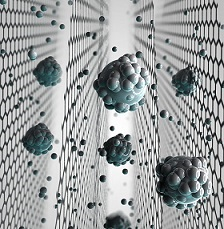
The team has developed graphene membranes so that the pore size in the membrane can be precisely controlled to sieve common salts from salty water, making it safe to drink.
The new findings from a group of scientists at the University of Manchester were published recently in the journal, Nature Nanotechnology. Graphene-oxide membranes developed at the National Graphene Institute have already demonstrated the potential of filtering out small nanoparticles, organic molecules, and even large salts. Until now, however, they couldn’t be used for sieving common salts used in desalination technologies, which require even smaller sieves.
Previous research at the University of Manchester found that if immersed in water, graphene-oxide membranes become slightly swollen and smaller salts flow through the membrane along with water, but larger ions or molecules are blocked. Now the much sought-after development of making membranes capable of sieving common salts has been achieved.
Graphene membranes.
When the common salts are dissolved in water, they always form a ‘shell’ of water molecules around the salts molecules. This allows the tiny capillaries of the graphene-oxide membranes to block the salt from flowing along with the water. Water molecules are able to pass through the membrane barrier and flow anomalously fast which is ideal for application of these membranes for desalination.
Professor Rahul Nair from the University of Manchester said: “Realisation of scalable membranes with uniform pore size down to atomic scale is a significant step forward and will open new possibilities for improving the efficiency of desalination technology.
Graphene is ultra-light and very tough, 200 times stronger than steel but still very flexible. It’s the thinnest material on earth – one million times thinner than a human hair. It is also a highly efficient conductor and can act as the perfect barrier. All of these properties give it the potential for interesting applications and previously, graphene-oxide membranes have also shown exciting potential for gas separation and water filtration.





